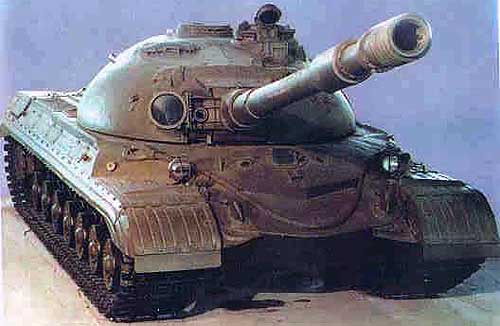
Experienced heavy tanks: object 277, object 279, object 770
Content
Experienced heavy tanks: object 277, object 279, object 770
The suspension is individual, with beam torsion bars and hydraulic shock absorbers installed on the first, second and eighth suspension nodes. The tank was equipped with anti-nuclear protection systems, thermal smoke equipment, a system for cleaning observation devices and underwater driving equipment. The tank's crew consisted of 4 people: commander, gunner, loader and driver. The car had good maneuverability. With a mass of 55 tons, it developed a speed of 55 km / h.
In 1958, two samples of object 277 were manufactured, they passed tests, which were soon stopped, and all work was curtailed. During the development of object 277, its version was designed with a gas turbine engine with a capacity of 1000 liters. with. object 278, but it was not built. From other machines developed at that time, the 277th differed favorably with the use of worked out and tested units and systems. Heavy tank object 277 is on display at the Museum of Armored Weapons and Equipment in Kubinka.
The performance characteristics of a heavy tank object 277
According to the same tactical and technical requirements, the team of designers of the Leningrad Kirov Plant under the leadership of L. S. Troyanov in 1957 developed a prototype of a heavy tank - object 279, the only one of its kind and, without any doubt, the most unique. The car had a classic layout, but the problems of security and patency were solved here in a very non-standard way.
The hull had a cast curvilinear shape with thin-sheet anti-cumulative screens that covered the hull in front and along the sides, complementing its contours to an elongated ellipsoid. The tower is cast, spherical, also with thin-sheet screens. The thickness of the frontal armor of the hull reached 269 mm, and the turret - 305 mm. The armament consisted of a 130 mm M-65 cannon and a 14,5 mm KPVT machine gun coaxial with it. The gun was equipped with a semi-automatic loading mechanism, a mechanized ammo rack, a two-plane weapon stabilizer "Groza", a TPD-2S stereoscopic rangefinder sight, and a semi-automatic guidance system. Object 279 was equipped with a full set of infrared night vision devices.
Gun ammunition consisted of 24 shots, machine gun - from 300 rounds. A 16-cylinder four-stroke H-shaped diesel engine with a horizontal arrangement of cylinders DG-1000 with a capacity of 950 liters was installed. With. at 2500 rpm or 2DG-8M with a capacity of 1000 liters. With. at 2400 rpm. The transmission included a complex torque converter and a three-speed planetary gearbox. Particular attention deserved the undercarriage of the tank - four caterpillar movers placed under the bottom of the hull. On each side there was a block of two caterpillar propellers, each of which included six dual non-rubberized road wheels and three support rollers, a rear drive wheel. The suspension is hydropneumatic.
A similar design of the chassis provided the car with an actual lack of clearance. The crew of the tank consisted of four people, three of whom - the commander, gunner and loader - were located in the tower. The driver's seat was in the front of the hull in the center, there was also a hatch for getting into the car. Of all the machines developed at the same time, object 279 was distinguished by the smallest booked volume - 11,47 m3while having a very complex armored body. The design of the undercarriage made it impossible for the vehicle to land on the bottom, and ensured high cross-country ability in deep snow and marshy terrain. At the same time, the undercarriage was very complex in design and operation, making it impossible to lower the height. At the end of 1959, a prototype was built; the assembly of two more tanks was not completed. Object 279 is currently housed in the Museum of Armored Weapons and Equipment in Kubinka.
The performance characteristics of a heavy tank object 279
The thickness of the frontal armor of the hull reached 120 mm. To increase the armor resistance of the edges, a collar was made around the entire perimeter of the hull. The tower is cast, also with variable thickness and angles of inclination of the walls. Frontal armor the tower had a thickness of 290 mm. The junction of the turret with the hull was protected. Armament consisted of a 130 mm M-65 cannon and a coaxial KPVT machine gun. The paired installation had a two-plane Thunderstorm stabilizer, an automated guidance system, a TPD-2S rangefinder sight, day and night aiming and observation devices, and a loading mechanism. The ammunition load consisted of 26 artillery rounds and 250 machine gun rounds. As a power plant at object 770, a 10-cylinder, four-stroke, two-row DTN-10 diesel engine with a vertical arrangement of cylinders, pressurization from a compressor and water cooling was used. It was installed in the stern of the tank perpendicular to its longitudinal axis. Engine power was 1000l. With. at 2500 rpm. The transmission is hydromechanical, with a complex torque converter and a planetary gearbox. A torque converter with two guide vanes was included in the power transmission circuit in parallel. The transmission provided one mechanical and two hydromechanical forward gears and a mechanical reverse gear.
The undercarriage had six large-diameter road wheels with internal shock absorption on board. The caterpillars had fixed fingers. Drive wheels with removable gear rims were located at the rear. The track tensioning mechanism is hydraulic. Suspension individual, hydropneumatic. The crew of the tank consisted of 4 people. The driver-mechanic controlled using a motorcycle-type handle. Object 770 was equipped with a system of protection against weapons of mass destruction, an automatic fire-fighting system, thermal smoke equipment, night devices and a gyro-semi-compass. For external communication, a radio station R-113 was installed, and for internal communication, an intercom R-120 was installed. Object 770 was made at a high technical level. The cast turret and hull with pronounced differentiated armor ensured increased projectile resistance. The car had good maneuverability and was easy to drive. According to the specialists of the test site, where all three experimental heavy tanks were tested, object 770 seemed to them the most promising. A prototype of this vehicle is kept at the Museum of armored weapons and equipment in Kubinka. The performance characteristics of a heavy tank object 770
Curtailment of work on heavy tanks
“The next morning we went to the site where armored vehicles. The samples were placed on separate concrete pads not far from each other. To our right, on a nearby platform, there was a prototype of a heavy tank, around which Zh. Ya. Kotin was walking. After inspecting IT-1, N. S. Khrushchev went to the heavy tank of the Leningrad Kirov Plant. Despite Kotin's attempts to push a new heavy tank into service, Khrushchev decided to stop production of the T-10 serial heavy tank and banned the design of heavy tanks altogether. I must say that a big fan of rocket technology, Khrushchev was an opponent of tanks in general, considering them unnecessary. In the same 1960 in Moscow, at a conference on the prospects for the development of armored vehicles with the participation of all interested parties - the military, designers, scientists, industry representatives, Khrushchev reaffirmed his decision: to complete serial production of the T-10M as soon as possible, and the development of new stop heavy tanks. This was motivated by the impossibility of providing a large gap between heavy tanks in terms of firepower and protection within the given mass limits from medium tanks. Khrushchev's hobby also had a strong influence. rockets: in accordance with the instructions of the government, all tank design bureaus countries at that time designed vehicles with missile weapons (objects 150, 287, 775, etc.). It was believed that these combat vehicles are capable of completely replacing cannon tanks. If the decision to terminate serial production, for all its obscurity, can be considered at least something justified, then the termination of research and development work was a serious military-technical mistake, which to a certain extent influenced the further development of domestic tank building. At the end of the 50s, technical solutions were implemented that turned out to be relevant for the 90s: a 130-mm cannon with compressed air purging of the barrel bore, electromechanical and hydromechanical transmissions, a cast body, hydropneumatic suspension, a single engine and transmission unit, and others. ... Only 10-15 years after the appearance on heavy tanks of loading mechanisms, rangefinder sights, rammers, etc., they were introduced on medium tanks. But the decision was made and the heavy tanks left the scene, while the medium ones, increasing their combat characteristics, turned into the main ones. If we consider the performance characteristics of the main battle tanks of the 90s, we can draw the following conclusions: the combat weight of modern main modern tanks ranges from 46 tons for our T-80U to 62 tons for the British Challenger; all vehicles are armed with smooth-bore or rifled ("Challenger") guns of 120-125-mm caliber; the power of the power plant ranges from 1200-1500 hp. s., and the maximum speed is from 56 (“Challenger”) to 71 (“Leclerc”) km / h. Sources:
| ||||||||||||||||||||||||||||||||||||||||||||||||||||||||||||||||||||||||||||||||||||||||||||||||||||||||||||||||||||||||||||||||||

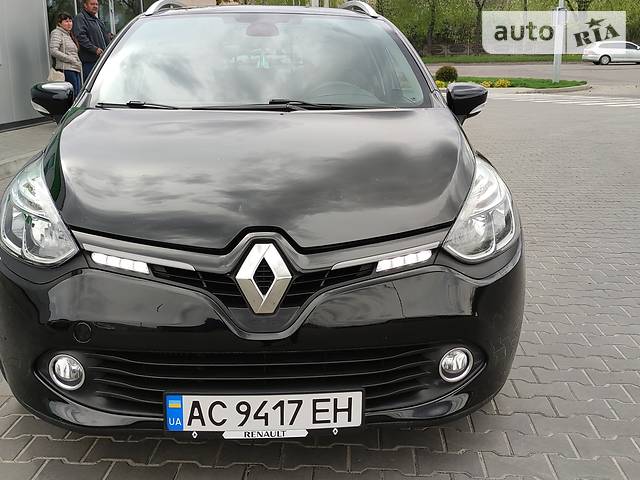
 Around 1956, the GBTU of the Soviet Army developed new tactical and technical requirements for a heavy tank. On their basis, three design teams in Leningrad and Chelyabinsk actually began on a competitive basis to develop a new heavy tank designed to replace the T-10 tank. The heavy tank (object 277) was designed in 1957 in the Design Bureau of the Chief Designer of the Leningrad Kirov Plant Zh. Ya. Kotin, using separate design solutions for the IS-7 and T-10 tanks. The car had a classic layout, with a rear power compartment and drive wheels. The hull was welded from bent armor plates with variable thickness and angles of armor parts. The frontal part of the hull is one-piece, the bottom of the trough-shaped structure. The cast, streamlined turret, with wall thicknesses from 77 mm to 290 mm, had an elongated aft section to accommodate the mechanized laying of the gun ammunition. The embrasure for the artillery system is made closed - there was no gun mask.
Around 1956, the GBTU of the Soviet Army developed new tactical and technical requirements for a heavy tank. On their basis, three design teams in Leningrad and Chelyabinsk actually began on a competitive basis to develop a new heavy tank designed to replace the T-10 tank. The heavy tank (object 277) was designed in 1957 in the Design Bureau of the Chief Designer of the Leningrad Kirov Plant Zh. Ya. Kotin, using separate design solutions for the IS-7 and T-10 tanks. The car had a classic layout, with a rear power compartment and drive wheels. The hull was welded from bent armor plates with variable thickness and angles of armor parts. The frontal part of the hull is one-piece, the bottom of the trough-shaped structure. The cast, streamlined turret, with wall thicknesses from 77 mm to 290 mm, had an elongated aft section to accommodate the mechanized laying of the gun ammunition. The embrasure for the artillery system is made closed - there was no gun mask.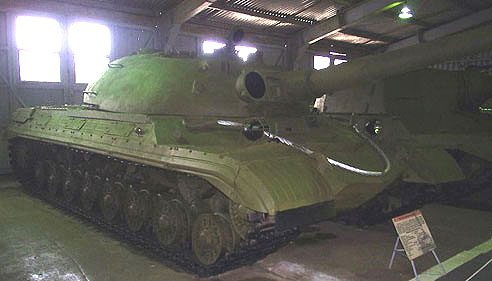

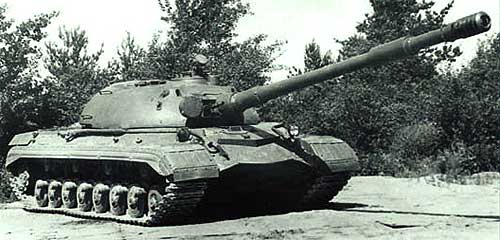
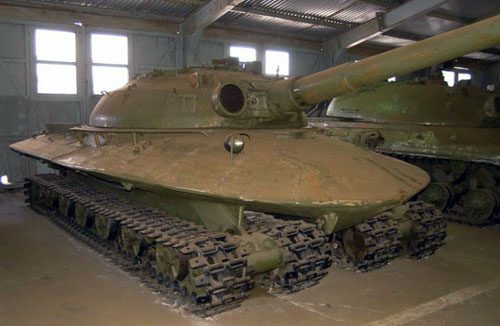
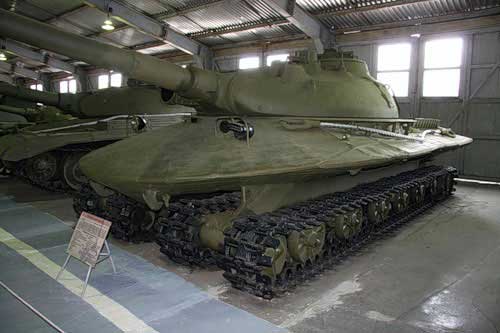
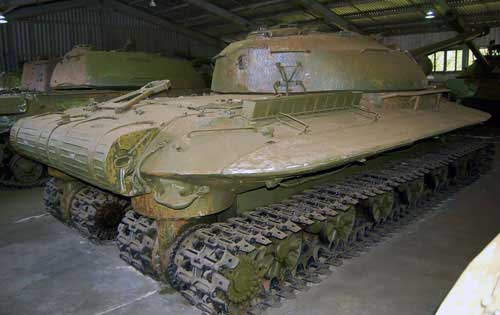

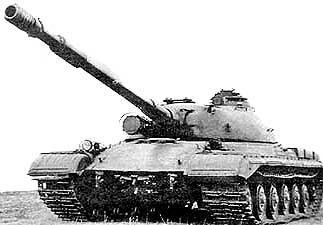 Another competitive heavy tank was the object 770, developed under the leadership of the Chief Designer of the Chelyabinsk Tractor Plant P.P. Isakov. Unlike the 277th, it was created entirely on the basis of new units and had a number of original design solutions. The body of object 770 is cast, with armor thickness differentiated in height and length. The inclined part of the sides is not made in one plane, but at different angles: from 64 ° to 70 ° to the vertical and with variable thickness from 65 mm to 84 mm.
Another competitive heavy tank was the object 770, developed under the leadership of the Chief Designer of the Chelyabinsk Tractor Plant P.P. Isakov. Unlike the 277th, it was created entirely on the basis of new units and had a number of original design solutions. The body of object 770 is cast, with armor thickness differentiated in height and length. The inclined part of the sides is not made in one plane, but at different angles: from 64 ° to 70 ° to the vertical and with variable thickness from 65 mm to 84 mm.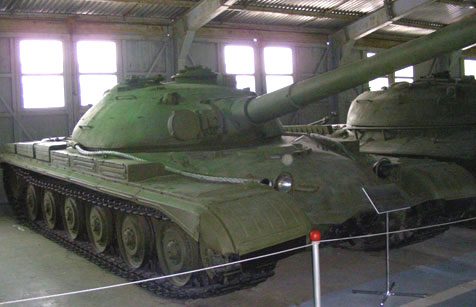
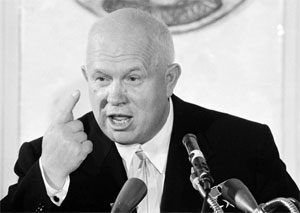 On July 22, 1960, at the Kapustin Yar training ground, a demonstration of samples of military equipment to the country's leadership, headed by NS Khrushchev, took place. This is how the chief designer of the Ural Carriage Works L.N.Kartsev, who was then presenting his IT-1 rocket tank, recalled this event:
On July 22, 1960, at the Kapustin Yar training ground, a demonstration of samples of military equipment to the country's leadership, headed by NS Khrushchev, took place. This is how the chief designer of the Ural Carriage Works L.N.Kartsev, who was then presenting his IT-1 rocket tank, recalled this event: